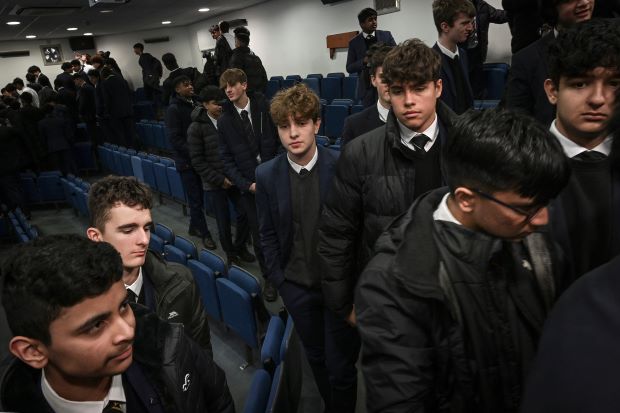More than 100 schools in England ordered to close buildings over faulty concrete
By Megan Specia
LONDON — More than 100 schools across England were ordered to close buildings Thursday (Aug 31) because they were constructed using unsafe concrete, the Department for Education said in a statement Thursday afternoon, a few days before the start of a new school year for most students.
The affected buildings contain reinforced autoclaved aerated concrete, or RAAC, a lightweight concrete material that was used between the 1950s and mid-1990s and has been determined to be prone to failures and crumbling.
In all, 104 schools were ordered to close buildings. The concerns about the concrete have been known for years, and schools had been told to prepare for the possibility that evacuations would be necessary at some point. One hundred fifty-six schools were confirmed to have used the lightweight material in their buildings, but 52 have put in safety measures to mitigate the risks.
The government said it would work with local authorities on “individual solutions” for the affected schools. That could mean using other buildings for classes, sharing space with other schools or, in some cases, erecting temporary buildings. Online classes are a last resort, the government said.
England’s education secretary, Gillian Keegan, said the government was trying to be vigilant for the safety of students and staff.
“Nothing is more important than making sure children and staff are safe in schools and colleges,” Keegan said in the statement, adding that was why the government chose to take action now, at the start of the school year. “We must take a cautious approach because that is the right thing to do for both pupils and staff.”
She noted that the government was “working hard to make sure any disruption to education is kept to a minimum” and that it will fund the repairs.
An elementary school in southeastern England where a roof collapsed in 2018 was later found to have used RAAC in its building. The collapse of the roof, which also contained RAAC, happened on a weekend and no one was hurt, but it raised the alarm about the potential for the material to be found in more schools. A subsequent 2019 safety alert also raised concerns. This year, education unions demanded that the government address the issue.
At the end of July, the National Audit Office, Britain’s independent public spending watchdog, released an extensive report on the sustainability of school buildings across England and noted that “700,000 pupils are learning in schools requiring major rebuilding or refurbishment.”
The number of students enrolled in the schools that have been ordered to close specifically because of the concrete issue is unclear.
The watchdog’s report also noted that, since 2021, the Department for Education has assessed “the risk of school building failure or collapse as critical and very likely, but it has not been able to reduce this risk.”
In its Thursday statement, the government advised that the vast majority of schools are unaffected and children should attend as normal when classes begin in September unless parents are notified directly.
The Department for Education said that it had been “proactively monitoring” all confirmed cases of the concrete material, but added that “recent cases have led to a loss of confidence in buildings containing the material.”
Critics of the government’s announcement have pointed out that the concrete risks are not new.
Bridget Phillipson, the opposition Labour lawmaker responsible for education, said in a statement that the government had known about the risks but waited until now to inform schools that they had to close. She said the move was “further disrupting children’s education.”
“The education secretary needs to tell parents how many schools are affected, whether their children are safe at school, and just what on earth is going on,” she added.
Although schools are run and maintained by local authorities, the Department for Education oversees the broader system in England. There are about 21,600 state schools in England, educating 8.4 million students, according to government figures, so the number of schools affected by the closures is relatively small.
Still, the failures could be disruptive as the school year is set to begin next week for most children.
Funding for schooling in England has dropped significantly in recent years, with the Institute for Fiscal Studies estimating that school spending per pupil fell by 9% in real terms between the 2009-10 and 2019-20 school terms.
Although the government set aside additional funding for education more recently — allocating an extra 7.1 billion pounds (about $8.99 billion) for schools in England through the end of 2023 that will increase spending per pupil — it will still be 1% to 2% lower in real terms than it was in the 2009-10 school year, in part because of rising costs.
Daniel Kebede, general-secretary of the National Education Union, which represents educators in England, said in a statement that the closures would cause “massive disruption to the education of thousands of children and huge inconvenience to school leaders.”
“It is absolutely disgraceful — and a sign of gross government incompetence — that a few days before the start of term, 104 schools are finding out that some or all of their buildings are unsafe and cannot be used,” he said.
-New York Times



Comments are closed, but trackbacks and pingbacks are open.